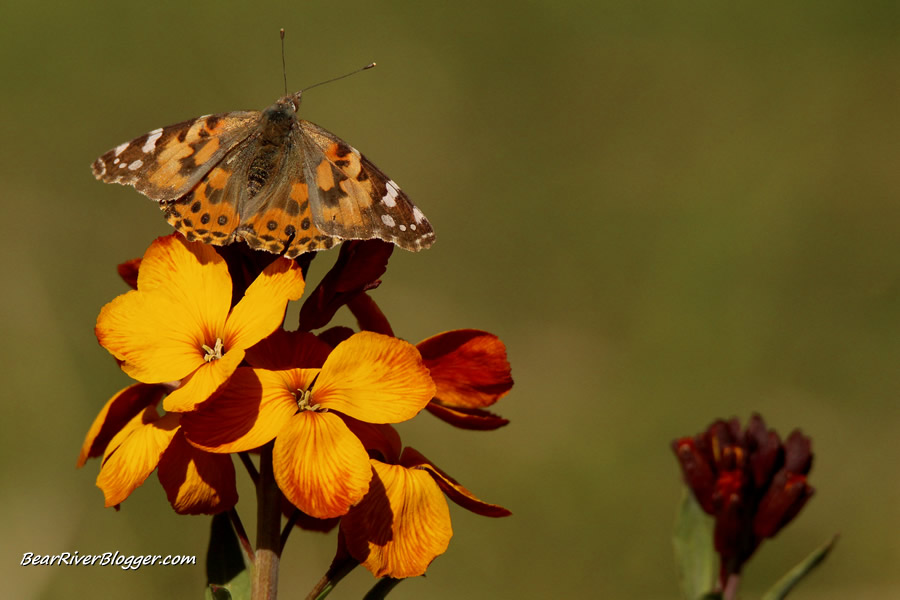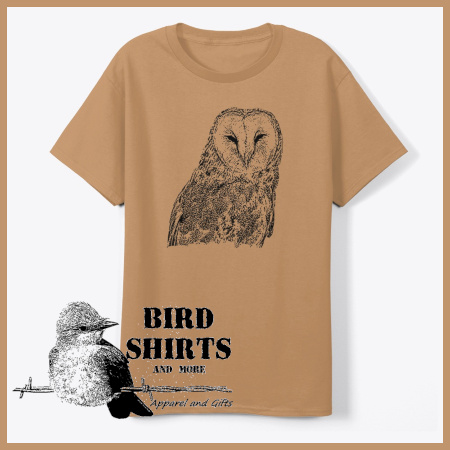For a lot of us, myself included, when we envision wildlife and nature photography, oftentimes our minds succumb to thoughts of great excursions to famed national parks such as Yellowstone and Zions or extended trips to large wildlife preserves such as the Bear River Migratory Bird Refuge.
Locations such as these do indeed offer the nature lover and outdoor photographer a great opportunity to see and photograph some of nature’s most incredible sights and sounds but there are places much closer to home we can also visit to find spectacular scenes of nature to enjoy and photograph.
Our very own backyards, in fact, can offer the outdoor photographer many wonderful opportunities to capture amazing and unique wildlife interactions in their own right. The advantage of having a bit of nature in our own backyard is we get to enjoy and photograph it anytime we want.
Depending on one’s situation, having a nature-oriented backyard, one well-suited for wildlife photography isn’t hard to set up but it does involve a few things most of us can easily do with a little work and effort. My brother and I have been doing this in our yards for a while now and trust me, it is well worth what little time and effort that is required.
Having a yard that attracts birds, butterflies, and other creatures is quite enjoyable. I will admit, however, I wish I had started years ago but the good news is it’s never too late to begin.

Below are a few simple tips for attracting and photographing wildlife in your own backyard. Some of them are photography tips and others are just suggestions to help attract more wildlife to your own backyard to enjoy and photograph.
They are in no particular order but rather just a random list of simple suggestions I have come up with that have helped me both photograph and enjoy wildlife in my own backyard. Most of the images shown were taken from my own or a family member’s yard.
Put out some water
Birds are one of the most common subjects we can photograph in our backyards and they are one of the easiest to attract. If I could only do one thing to attract birds, it would be to put out a birdbath. Even more so than food, I have found having an ample supply of water each day brings in many birds to my yard.
It’s a simple, quick, and easy way to attract our avian friends to the premises for us to enjoy.

During summertime, the birds will both drink and bathe in the water, and during winter, especially in those sub-freezing climates as I am in, having open water just to drink is oftentimes a scarce commodity.
Birds need a daily source of water year-round and offering a shallow, easily accessible source of water will help attract birds to your yard. It’s something that can be done immediately and will often produce results fairly quickly.
Place the birdbath near some bushes or trees, locations where birds naturally tend to reside and they will find it and return to it regularly. Fill the water each day and keep the vessel clean.
I use a concrete pedestal-style birdbath in my own yard. My brother uses a couple different types of water vessels in his yard, one being a small water fountain in the summer and a heated pan-style birdbath for the winter that keeps the water from freezing.
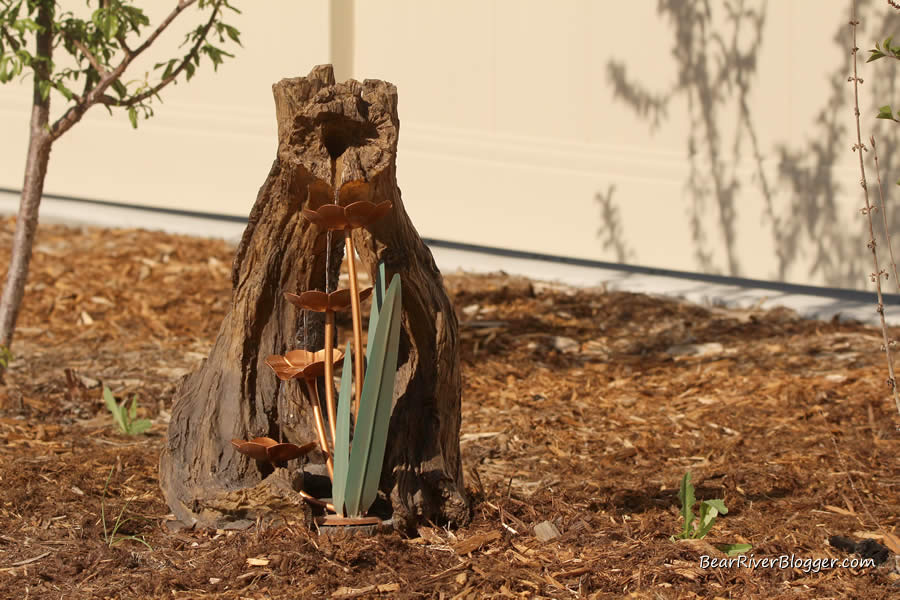
The small fountain-style vessel not only attracts birds but has a soft, soothing effect from the trickling water that is just so refreshing to listen to while sitting out in the yard watching birds.
At the end of this article, I will put a link for more information about the fountain we use to supply water for anyone interested in more details. A link to the heated birdbath is at the bottom of this recent article I posted about goldfinches.
There is a large variety of birdbaths available on the market but the important thing is to keep it filled with fresh, clean water year-round. Having a birdbath in the yard supplying a steady source of water will attract birds to your backyard with little to no effort besides the minimal time spent filling and cleaning it.

Plant a pollinator garden
Now I will admit planting a small garden might not be for everybody but it is a great way to not only add beauty to the backyard but it can help attract pollinators such as bees and butterflies, both of which are quite enjoyable to watch as well as to photograph.
Last spring, I devoted a small section of my lawn to a pollinator garden. I tilled the grass under and planted a few simple plants, including mexican sunflowers, wildflowers, and a patch of regular sunflowers, nothing too extravagant but just a small, simple plot intended to attract butterflies.
I was amazed at how the mexican sunflowers not only attracted monarch butterflies but hummingbirds as well. The wide variety of wildflowers and regular sunflowers attracted both bees and butterflies to the garden and once the sunflowers ripened the goldfinches couldn’t leave them alone.
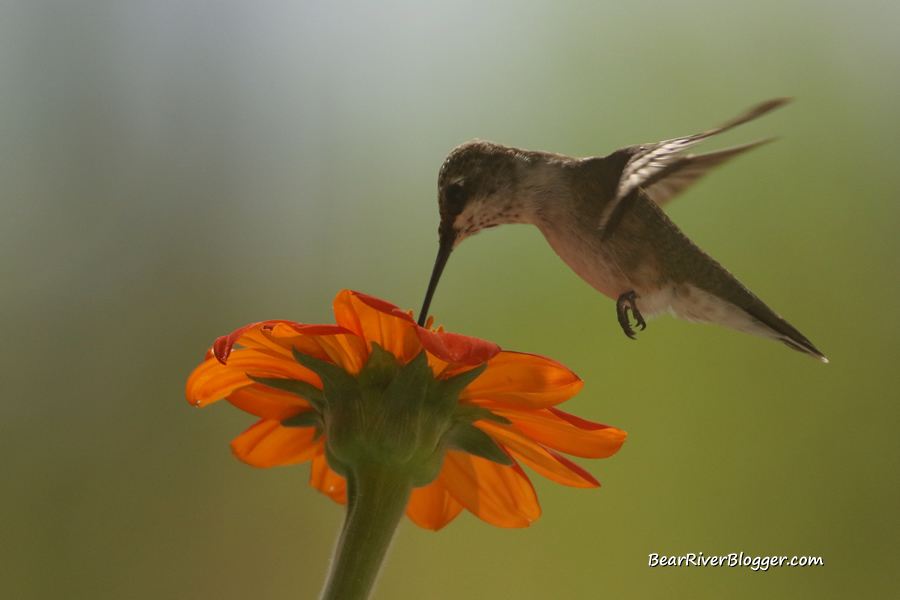
I am not a gardener by any definition of the word but it was extremely easy to grow a few simple plants that did indeed attract butterflies, bees, and birds to my yard.
This spring, the wildflowers are re-blooming and they have been attracting a variety of bees and butterflies for a couple weeks now. Each and every time I go out in the backyard and watch the small patch of flowers, there are always a few butterflies and several bees sitting in the small patch of flowers feeding on the nectar.
I have already tilled over a much larger section of my backyard to expand my pollinator garden for this year because of the great success I have had and the enjoyment it has brought. I plan on adding a much bigger plot of wildflowers as well as other beneficial plants to offer nectar for our pollinating friends this summer and fall.
Setting up a small garden does take a little bit of time, expense, and effort but it is well worth it. I spend a lot of time in my yard with a camera each week waiting for butterflies to land on the wildflowers to photograph and my efforts are paying off. The photo below is one of my all-time favorite butterfly images and it was photographed in my small pollinator garden just a few days ago.
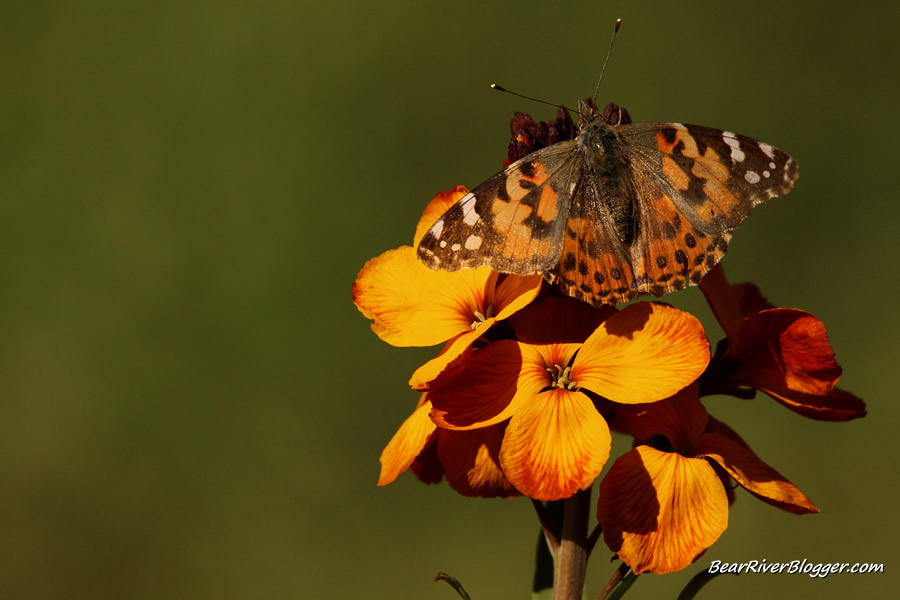
If a full-fledged garden isn’t feasible, try planting some flowers in large pots or a small raised bed to help attract butterflies. Before I decided to take on the task of a gardener, each spring I would go to the local nursery and pick up a few selected flowers to help attract butterflies to the yard. I would transplant the flowers in larger pots and they would last most of the summer with a little care.
One advantage pots do have over a traditional garden is they can be moved around the yard to take advantage of locations with better lighting and a more photogenic background. I have moved pots around in my yard to compensate for poor lighting or a distracting background so if all you can do is pots, don’t despair, it does have its advantages.
As I learned more about growing plants, success was had in growing mexican sunflowers in some moderately sized pots last year. Without question, they are by far one of the first plants I would suggest for anyone looking to attract butterflies and hummingbirds to their yard.
Put up a bird feeder
Along with adding water to your property, putting up a bird feeder and offering seeds is a quick and easy way to attract songbirds to your yard. I have done this for years and I keep a seed feeder up in my backyard year-round now, in fact.
There are a variety of seeds and many different types of feeders to choose from, each one geared for specific birds. I would suggest checking with your state wildlife agency to see if they have a list of birds for your region and then determining which type of seeds and feeders will work the best to attract the species of birds commonly found in your area.
For the most part, however, black oiled sunflower seeds will attract the widest variety of birds and is a good go-to seed for general all-around bird feeding.
If you get specific birds, like goldfinches, for example, you can utilize specific feeders such as nyjer seed feeders which attract a smaller number of species of birds but will often attract a greater number of that particular type of bird. I have seen a couple dozen lesser and american goldfinches at the same time at my nyjer seed feeders during the wintertime and most other birds leave this feeder alone so it attracts more goldfinches than all the other feeders in the yard.
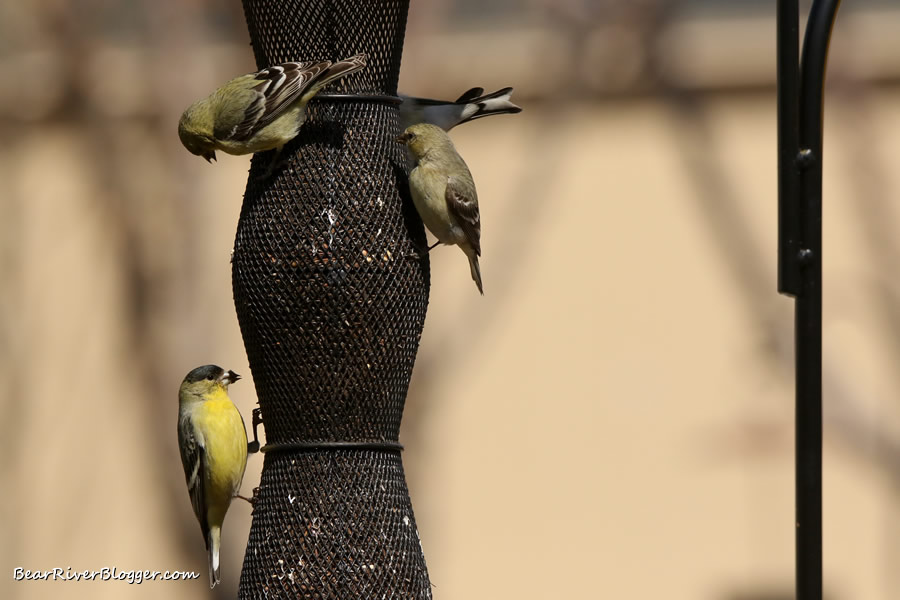
Hummingbird feeders
Putting out a hummingbird feeder is another quick and easy way to bring birds into your yard for photography. The great thing about hummingbirds is almost any yard can attract these small, delicate winged beauties, regardless of how much or little vegetation is present in one’s yard. Hummingbirds will come just for the food so even if your yard has very little to no bushes or trees, I would still try putting out a hummingbird feeder.
Once they find it, hummingbirds will return many times throughout the day to feed on your sweet sugary offering.
For photographing hummingbirds, even if you don’t have a garden full of flowers, put a few potted plants near the hummingbird feeder and you will occasionally get interested hummingbirds to investigate, thus giving you an opportunity to photograph them on a flower instead of at the feeder.
If you do decide to feed hummingbirds, keep in mind hummingbird feeders need to be kept clean and the food changed regularly. When the sugar water starts to get warm it can start to mold and that can be fatal to hummingbirds. This is easily avoided by putting out a small feeder and changing the sugar water every couple of days and washing the feeder regularly as well.
My brother recently purchased a different style hummingbird feeder than what I have always used. It is a cup-style feeder and one big advantage I have seen is it doesn’t leak like the feeders he was previously using. It is also very easy to fill and as well as clean which is an important part of feeding hummingbirds.
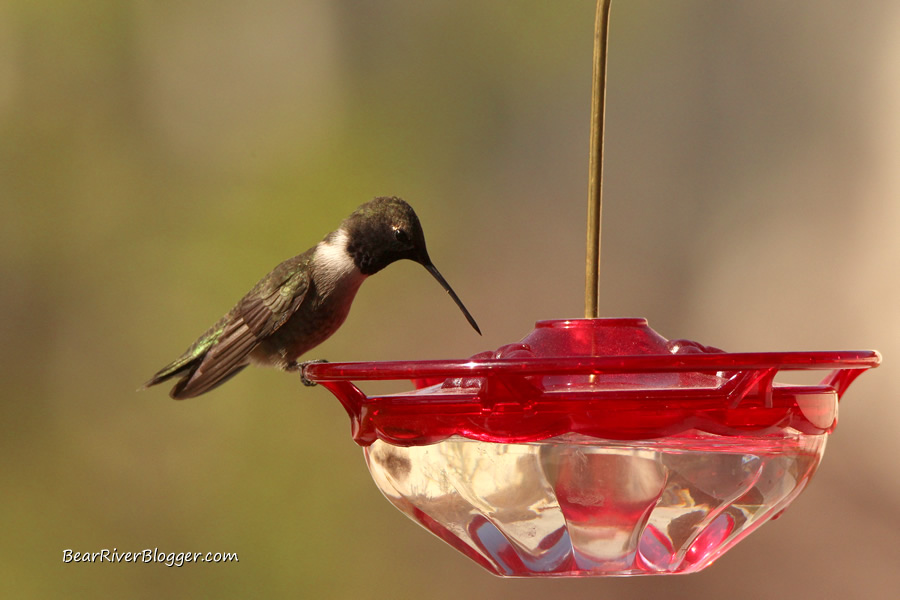
This type of feeder also has perches that allow the hummingbirds to land and sit while drinking, something I would tend to think is much better for the hummingbirds to help conserve energy, especially during migration.
I will put a link at the end of this article for more information about the cup-style hummingbird feeders my brother has recently switched to and now prefers over the jar-style feeders that are more commonly used.
As a side note, I am planning on a future blog post solely about photographing hummingbirds so don’t forget to subscribe to our website to be notified about future blog posts.
Plant host plants for butterflies
The last thing I will suggest to help modify your backyard to encourage wildlife to visit is to plant a few host plants for butterflies. Host plants are types of vegetation that butterflies lay their eggs on and, in turn, are food for the growing caterpillars.
The most notable of this is milkweed, the only species of plant monarch butterflies will use to lay their eggs on. Other butterfly species, such as swallowtails and painted ladies, for example, utilize a greater variety of different host plants but the important thing is to offer a place for butterflies to come to lay their eggs. It not only will help attract butterflies to your yard but it will also help them survive as a species.
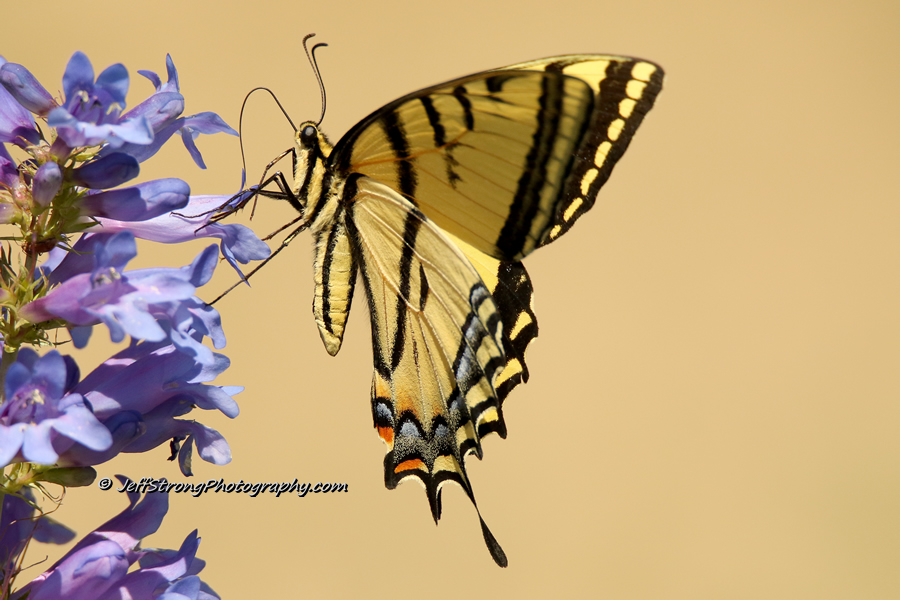
Having both host plants and pollinating plants, such as a variety of wildflowers, in the same general location is the best way to attract butterflies to your backyard. Butterflies need both to survive and having both host plants and pollinating plants in your yard will give them more of a reason to visit and you more opportunities to photograph them.
Every region has different species of butterflies common to the area so do a little research on which butterflies frequent your neck of the woods and plant a few suitable host plants for them to lay their eggs on. Almost everybody can attract monarch butterflies so planting a locally native species of milkweed to your region is something we all can do to not only attract monarchs to photograph but to help ensure their long-term survival as a species.
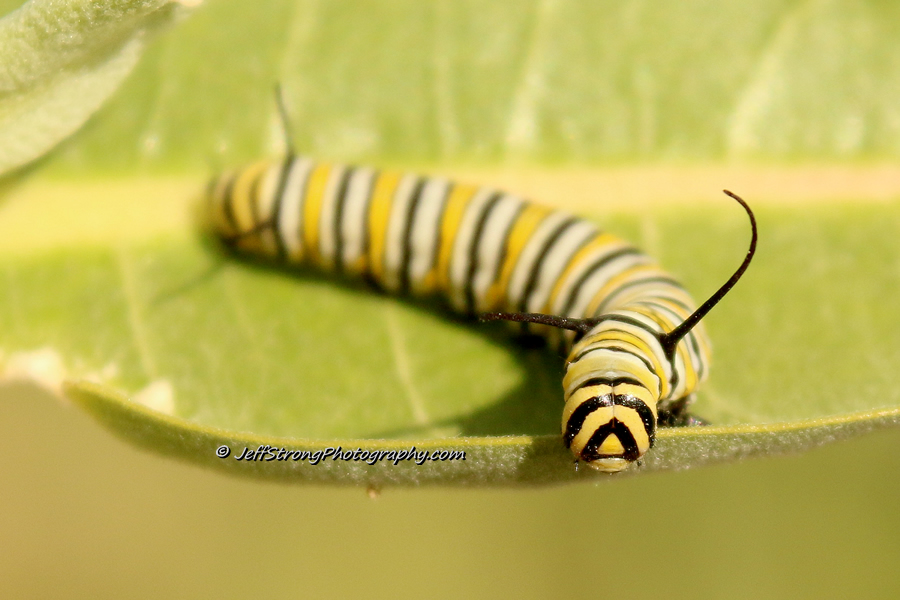
Consider the time of day
There are several aspects to photographing nature which relates to the time of day. From a photography point of view, the best time for the best light is the first couple hours of the day and the last couple hours of the evening, commonly referred to as the golden hours.
This time of day definitely gives us shutterbugs the best light for photography. The prevailing light is warmer and softer than what the harsh noonday sun has to offer. When I can, I always try to photograph early morning or late evening because the light is so much better than the rest of the day and great light can make even an ordinary subject look extraordinary.
But the problem with wildlife photography is, however, sometimes mother nature doesn’t always offer itself when the lighting is the best. One example of this is springtime when butterflies are just starting to emerge. They will come out when the heat of the day is warm enough for them to wake up and take to the wing.
Early mornings during springtime don’t always offer the necessary temperatures for butterflies to be in flight while the lighting is best. Sometimes early afternoon is when butterflies are found on the wing but the lighting is, well, less than perfect.
We just have to make do with situations such as this and photograph when the subjects allow us to and work with the lighting as best we can with our camera settings and editing programs. In cases such as this, try changing your white balance a bit to add a bit more color when the prevailing light is a bit harsh.
With regards to photographing birds, I prefer mornings over the rest of the day when at all possible. Birds seem to be more active at this time which allows for some interesting images to be taken. Evenings can be good for birds as well but I find mornings are when the birds seem to be the most active so if I had my preference, I try and photograph birds during the first few hours of the day when the light is the best and the bird are the most active.
Gear
The gear you need for your backyard isn’t always the same you may use at many of our national parks and wildlife refuges for one simple reason, you are usually much closer to your subjects in your yard than in these much larger places. Don’t worry about what gear you don’t have, focus on what you can photograph with the gear you do have. In the yard, there is always something interesting to photograph without having a huge telephoto lens.
You will need a good basic camera, a DSLR is what I suggest, one that allows you to change lenses when needed for different situations. I started off with a Canon Rebel as my first digital camera many years ago and I still use it today just for fun. I have several cameras but I still use my old Rebel at times because it does take some great pictures. In fact, some of the images on this blog post were taken with my old Rebel camera, including this monarch butterfly.

As you learn more about photography, you will find bigger and better cameras aren’t always the solution to better images as much of the time the photographer is the limiting factor. For example, if you can’t take a good picture with a Canon Rebel, you won’t be able to take a good picture with a Canon 7D MkII. Learn photography in and of itself before you get too far immersed in the world of photography gear.
The camera can only do what you tell it to do so spend the time and learn the basic concepts of photography first and foremost. Upgrading your gear will only help you when you have learned about light and composition.
When I am out on the Bear River Refuge where a large lens is needed, I use my 150-600 mm lens but in my own backyard, I will oftentimes use my 75-300 mm lens because the subjects are typically much closer. A smaller lens is by far easier to photograph with and sometimes I have found the larger lens is actually too big in my own yard when a butterfly, for example, lets me get quite close as I have been numerous times in the past couple of days.
I will use a tripod in my yard quite frequently, especially when I can set it up on a specific setting like a patch of flowers and just leave it there until a butterfly shows up. I will set up the camera on the tripod and take a couple of images to get the correct exposure and blurring of the background I want and then leave the camera on the tripod as I work in the yard, all the while watching to see when a butterfly will make an appearance in my selected scene.
You can also just forgo the tripod and photograph hand-held but I shake a lot nowadays so I prefer to use some kind of rest whenever possible. Utilizing a tripod, however, lets you get everything set up beforehand, and sometimes birds and butterflies will only give us a few short seconds for a photo so being prepared ahead of time can make al the difference in the world.
The key to nature photography is to have your camera ready for when something in your yard makes an appearance. I always have a camera handy with a memory card in it just for those times when either a bird or butterfly visits my yard.
Being prepared is the number one rule of wildlife photography so keep your camera handy and ready to use whenever your out in the yard regardless if you prefer to use a tripod or shoot hand-held. You don’t need a lot of expensive gear to photograph in your own backyard but you do need to have your gear at the ready when those opportunities do arise.

Composition
Composition is a long blog post in and of itself, one I will be taking on in the future mind you, but suffice it to say if you follow the basic premise of the rule of thirds you will immediately enhance the quality of your images.
Think of your image as a grid with both vertical and horizontal lines making up the grid. Try and place your subject on one of the vertical thirds, offsetting it from the center of the image.

Basically, this adds a bit of tension to the image by taking the subject out of the middle where we would normally expect it to be. If the subject is a bird and is looking to one side or the other, try and leave that particular side as the open side of the image.
I will admit, this isn’t always possible but when you can, planning for simple things such as this will add to the success of the image.
Sometimes we can’t always properly compose the image as we are taking the photograph. In many cases, especially with birds, it is best to leave enough room around the subject so you can crop your image for the intended composition.
One of the biggest mistakes photographers with large lenses make is trying to zoom in too close and as a result, lose the ability to crop for composition during processing. I still fight this one I will admit when I am photographing with my large lens. Give your image a bit of room to crop for composition because it is quite hard to get the image perfect during the shoot when photographing wildlife.

Blurring the background
I recently wrote a long blog post about blurring the background so I will encourage you to read that post on how to blur the background for the technical side of it. I will say, however, to greatly improve your images by making the subject stand out, work on blurring the background as much as you can.
Having a soft, smooth palette behind the subject will really make it stand out and grab the viewer’s attention. It isn’t as hard to do as one might think so take a read on my recent blog post about how to blur the background in your images.
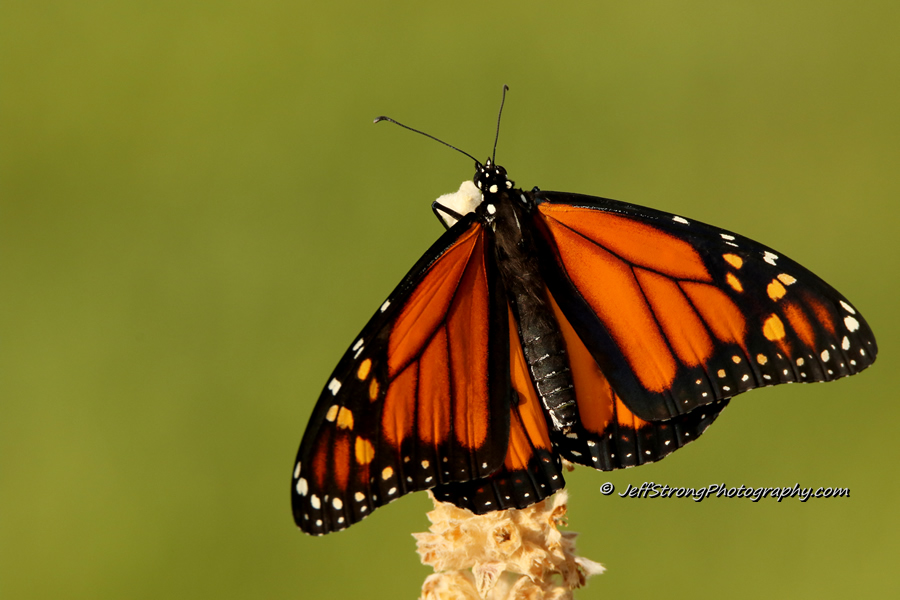
Don’t forget the insects and snakes
Insects aren’t always thought of as interesting players in nature but every backyard has some of nature’s smallest citizens and they can be some of the most interesting subjects to photograph.
Last summer, while checking milkweed for monarch eggs I noticed a scene play out on a milkweed leaf most people never get to see. As I was turning over leaves to check for eggs, I noticed a small spider had caught a tiny moth or butterfly.
Small interactions such as this play out every single day in our very own yards are a most interesting part of nature and I was glad I was not only able to witness it but also to capture a few images of the scene playing out right in front of me.
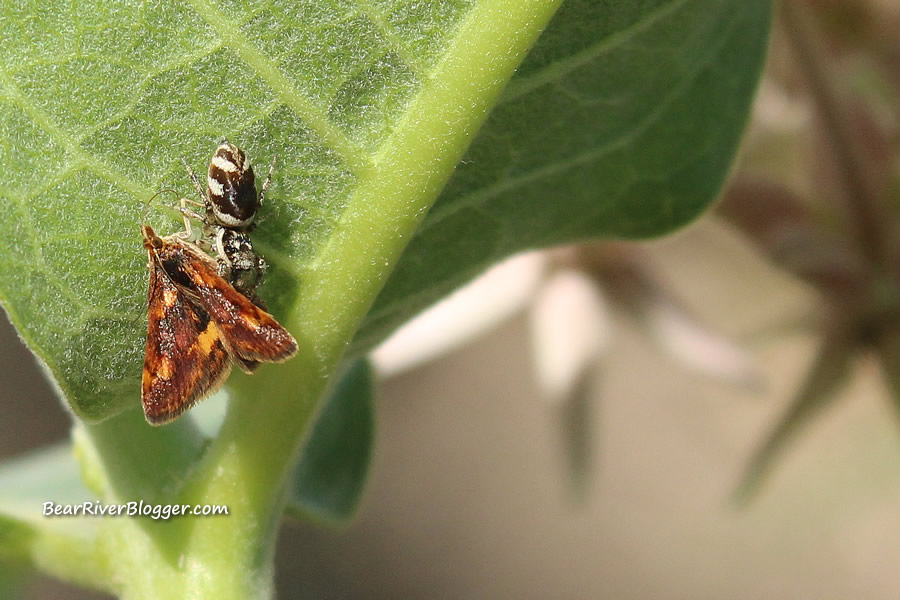
The lesson here is always to keep a lookout for something to photograph while out in the yard. Many times it can and will be small insects acting out their role in nature. I find each level of nature interesting, regardless if it is migrating tundra swans on a national wildlife refuge or a small spider on a single milkweed plant at the end of the driveway.
I will admit some snakes do indeed creep me out but my yard has a healthy population of harmless garter snakes, commonly referred to as garden snakes.
A few days ago I came out of my garage and almost stepped on a garden snake basking in the sun just a few feet from my garage door. I quickly grabbed my camera and snapped a few low angled images before it slithered off into the grass. Getting down on their level, as scary as that might be for some, does produce a more interesting point of view while photographing our slithery friends.
Both snakes and insects can and do make interesting subjects to photograph and both can be found in many of our own backyards so keep an eye out for them and take advantage of the situation when they do present themselves for a photo.
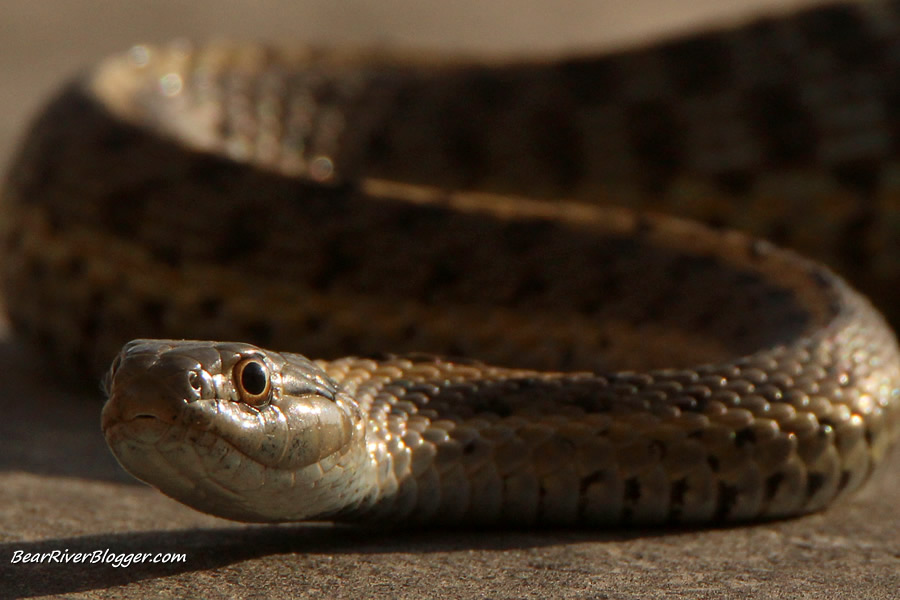
Watch the sun
Keep an eye on the sun when you are out in your backyard photographing. The direction of the sun will play a big part in getting the most detail in your images.
Having the sun at your back will put the most light on your subject and reflected back to your camera. This will give you the most detail and color for your images.
Sometimes it isn’t possible to photograph with the sun at your back and you may need to utilize sidelight or even backlighting on your subject but when at all possible try to put yourself so the sun’s light comes over your shoulder and directly hits the subject you are trying to photograph.
It might not seem like a big thing but the more light you can get reflecting off your subject and back to your camera, the more detail and color you will capture, and a better image will result.
Conclusion
Photographing in your own backyard can be fun and rewarding. There are a lot of things so close to us to photograph but sometimes we think we need to travel hundreds or even thousands of miles for an interesting subject or scene in nature to capture with our cameras. This isn’t the case, our very own backyards offer a great setting for photography, and with a little work, our yards can be unique and interesting locations to capture some of nature’s most interesting scenes.
I appreciate your readership and I do hope you will subscribe to my website. I plan on keeping photographing things in nature and blogging about them so if this interests you, visit my subscribe page and sign up for email notifications for future blog posts.
Lastly, as noted earlier in the article, here are some of the items mentioned above. Click on the images to be taken to Amazon for more information. I am an Amazon Associate so I do receive a small commission for products sold from my referral but you are under no obligation to purchase anything. I just offer my suggestions for these products from what I have personally experienced in hopes of helping others with what has worked for me. The products I list on my blog are ones I have actually used, seen in action, and like. (As an Amazon Associate, I earn from qualifying purchases. #commissionsearned)
Garden Fountain

Wind & Weather Freestanding Woodland Stump Water Fountain
Hummingbird Feeder

Aspects 433 HummZinger HummBlossom Feeder


